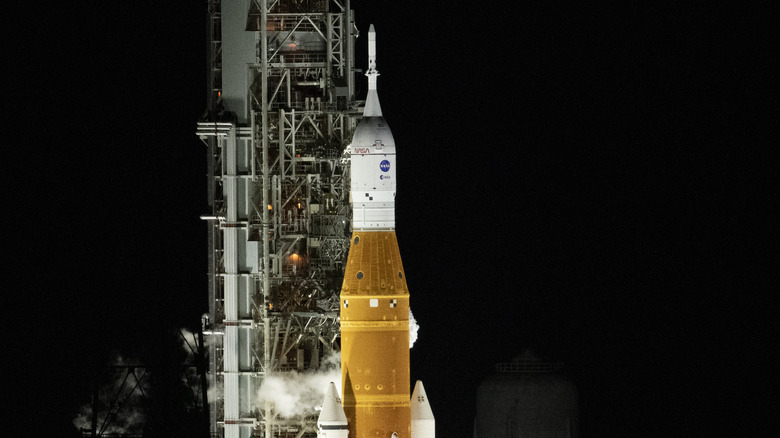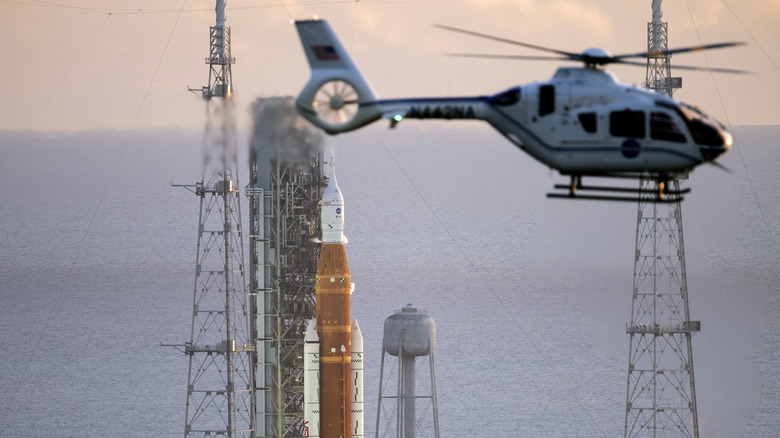NASA Scrubs SLS Megarocket Launch: Here's What Happened
August 29, 2022, was supposed to be the day NASA launched the Artemis I — an un-crewed rocket that was to be sent around the moon and back in order to test the agency's abilities to explore deep space. It was also intended to act as the first phase of a multi-phase series of launches through 2025, culminating in a crewed moon landing.
However, space flight is complicated and the necessary science behind it all can be extremely fickle, which in this instance has resulted in the launch being scrubbed for the time being. NASA hasn't announced a new schedule for the Artemis launch yet — likely as it's still working on the issue at hand — but you can keep an eye out for changes on the official website's Mission Events page.
While the delay does put a damper on what was supposed to be a historic Monday, NASA will almost certainly try again. The Kennedy Space Center is assuring those who purchased launch viewing packages that their tickets are still good, and will be usable at the rocket's next takeoff attempt. And those of us who were hoping to watch the launch live via streaming will still be able to follow along from a greater distance once things are back on track.
So what went wrong?
In short, Artemis ran afoul of some technical issues. In long, a "bleed test" of engine 3 — one of the bottom, core stage rockets — failed to reach the appropriate temperature range before the narrow two hour launch window closed. And with engineers unable to pinpoint the problem in time, a launch would have meant that Artemis wouldn't be able to hit the necessary trajectory to reach the moon.
Due to the constraints of flight paths, planetary rotations, and orbits, rockets generally have only a few hours to take off in order to hit their intended marks. If and when they aren't able to take off, the launch will have to be pushed back until everything lines up properly again. Depending on how long it takes to discern and fix any issues (and weather permitting), this could push back the Artemis launch by a day or two, a week, or even longer.
An abundance of caution is warranted when it comes to space travel, as even minor problems can lead to tragedy. There are so many components that have to work perfectly, and dozens of outside factors that need to be accounted for, every time a rocket launches. Too hot, too cold, too humid, too windy, a hairline crack, a faulty wire — if it's not right, it needs to be fixed immediately, or things need to be delayed until conditions are favorable.

